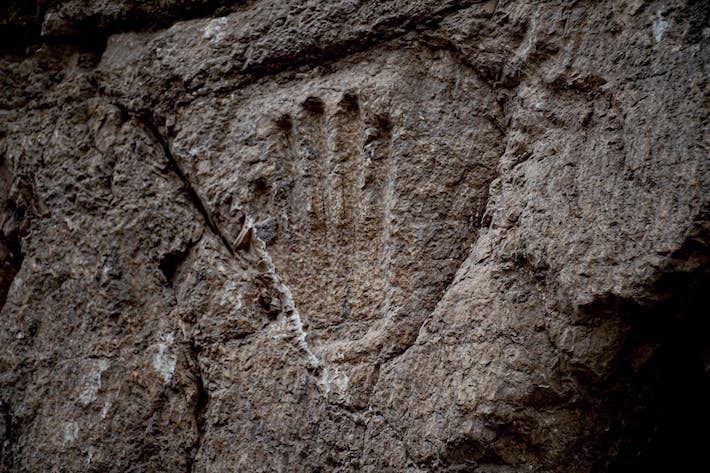 JERUSALEM, ISRAEL—According to a statement released by the Friends of the Israel Antiquities Authority, excavations along Sultan Suleiman Street in Old Jerusalem uncovered a deep defensive moat dated to the tenth century A.D. The 30-foot-wide moat, carved from rock, would have surrounded the ancient city walls as an extra layer of protection from potential invaders. “Armies trying to capture the city in the Middle Ages had to cross the deep moat, and behind it, two additional thick fortification walls, while the defenders of the city on the walls rained down on them fire and sulfur,” said Amit Re’em of the Israel Antiquities Authority. Tunnels in the fortifications would have allowed the defenders to attack the enemy in the moat as well, he added, noting that in the First Crusade of 1099, it took the Crusaders five weeks to cross the moat while under heavy fire. One as-yet-unexplained handprint was found carved into the moat wall. It may have been intended to symbolize or point to something, or may be a bit of surviving graffiti, the researchers concluded. To read about the archaeology of the Crusades, go to "Reimagining the Crusades."
JERUSALEM, ISRAEL—According to a statement released by the Friends of the Israel Antiquities Authority, excavations along Sultan Suleiman Street in Old Jerusalem uncovered a deep defensive moat dated to the tenth century A.D. The 30-foot-wide moat, carved from rock, would have surrounded the ancient city walls as an extra layer of protection from potential invaders. “Armies trying to capture the city in the Middle Ages had to cross the deep moat, and behind it, two additional thick fortification walls, while the defenders of the city on the walls rained down on them fire and sulfur,” said Amit Re’em of the Israel Antiquities Authority. Tunnels in the fortifications would have allowed the defenders to attack the enemy in the moat as well, he added, noting that in the First Crusade of 1099, it took the Crusaders five weeks to cross the moat while under heavy fire. One as-yet-unexplained handprint was found carved into the moat wall. It may have been intended to symbolize or point to something, or may be a bit of surviving graffiti, the researchers concluded. To read about the archaeology of the Crusades, go to "Reimagining the Crusades."
1,000-Year-Old Dry Moat Uncovered in Jerusalem
